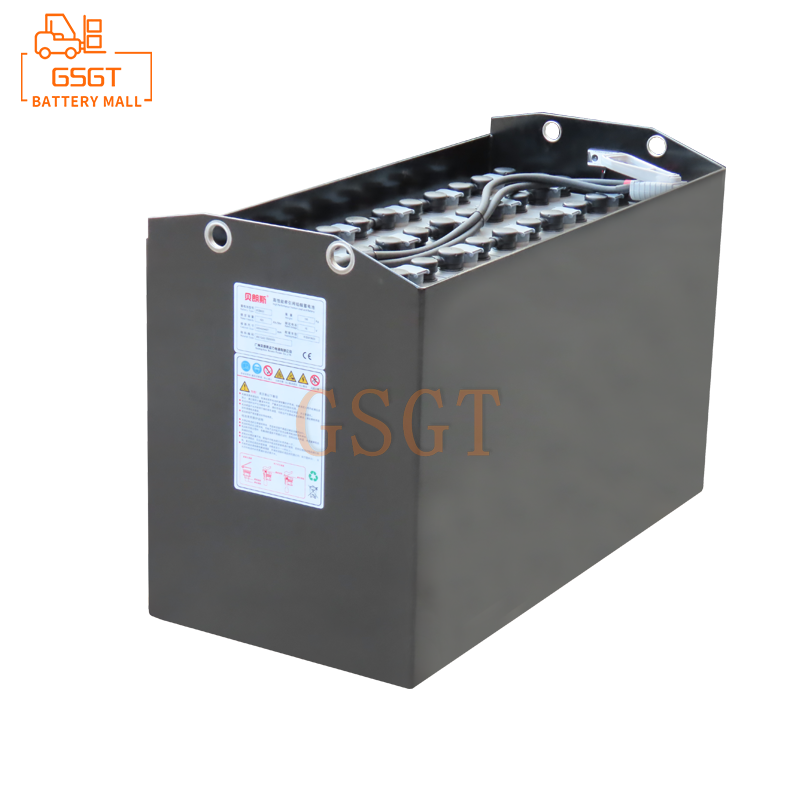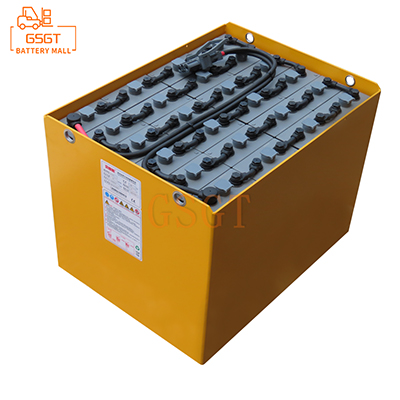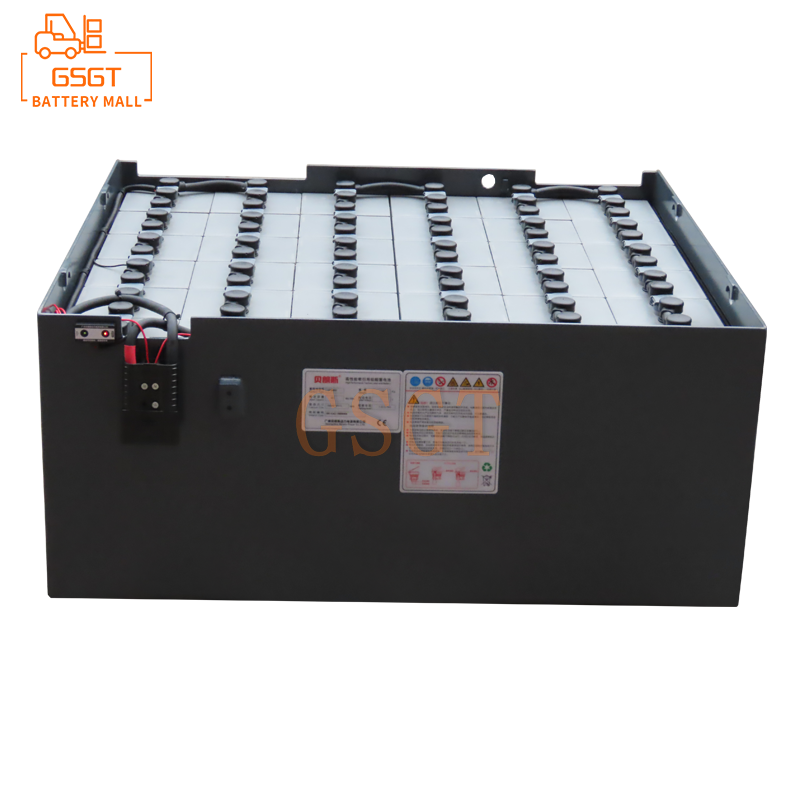Time:2025-04-28 10:40:37
Browse:617
In the modern logistics and warehousing industry, forklifts, as important handling equipment, their normal operation has a crucial impact on the production efficiency of enterprises. As the core power source of forklifts, lead-acid batteries, once they malfunction, will not only cause the forklift to stop working but also may trigger a series of safety issues. Therefore, understanding and mastering the correct emergency response operations when forklift lead-acid battery faults occur is of great significance for ensuring the safe and stable operation of forklifts.
1. Common Fault Types and Cause Analysis of Lead-Acid Batteries
(1) Insufficient battery power
1. **Reason**
Insufficient power of lead-acid batteries is a relatively common fault. The reason might be insufficient charging, such as too short charging time or charger malfunction, which causes the battery to fail to be fully charged. In addition, when forklifts operate at high loads for a long time, exceeding the normal endurance capacity of the battery, the power will also be drained rapidly. In addition, battery aging and the reduction of active substances on the plates can also lead to a decrease in battery capacity, resulting in insufficient power.
2. **Phenomenon**
During operation, the forklift's power is significantly weakened, its speed slows down, and it feels extremely difficult to lift goods. The battery indicator light on the dashboard also shows that the battery level is relatively low.
(2) Battery leakage
1. **Reason**
One of the main causes of leakage is the damage to the battery casing due to collision, aging and other reasons. In addition, if the sealing at the connection points of the plates inside the battery is poor, the electrolyte may also seep out from the gaps. When overcharged, excessive gas is produced inside the battery, the pressure increases, and it may also break through the sealing structure, causing leakage.
2. **Phenomenon**
Traces of the electrolyte can be observed on the battery surface. The electrolyte is acidic and can cause corrosion to the surrounding metal parts. Rust or corroded dents may be seen on the metal surface. At the same time, the electrolyte level inside the battery will drop significantly.
(3) Battery overheating
1. **Reason**
During the charging process, if the output voltage of the charger is too high or the charging current is too large, it will cause intense chemical reactions inside the battery, generating excessive heat and leading to overheating of the battery. Internal short circuits in the battery, such as those between the plates or between the plates and the casing, can also cause abnormal increases in current, leading to overheating of the battery. In addition, poor battery heat dissipation, such as poor ventilation in the battery compartment or blocked heat dissipation holes, prevents heat from being dissipated in time, which can also cause the battery temperature to rise.
2. **Phenomenon**
When touching the battery casing with your hand, you will feel it is obviously hot and the temperature is significantly higher than the normal level. At the same time, you may smell a pungent odor emitted by the battery. This is due to the smell of gas produced by the decomposition of the electrolyte caused by overheating of the battery.
(4) The battery cannot be charged
1. **Reason**
Faults in the charging circuit, such as open circuits, loose plugs, or blown fuses, can prevent the current from being transmitted normally, making it impossible to charge the battery. Charger malfunctions, such as damage to the internal circuit or aging of components, cannot provide effective charging voltage and current for the battery either. The internal plates of the battery are severely sulfated, and a layer of white and hard lead sulfate crystals forms on the surface of the plates, which will hinder the normal charging reaction of the battery.
2. **Phenomenon**
After connecting the charger to the battery, the indicator light of the charger does not light up or shows an abnormal status. The battery's power does not increase at all during the charging process, and the charging indicator on the dashboard does not display normally either.
2. Emergency Response Operations When Forklift Lead-acid Battery Faults Occur
(1) Emergency Response to Insufficient Battery power
1. **Stop the operation immediately**
When it is found that the battery of the forklift is insufficient, the current cargo handling operation should be immediately stopped, and the forklift should be parked in a safe, flat place that does not impede the passage of other vehicles and personnel. Avoid parking in dangerous areas such as ramps and narrow passages to prevent unexpected situations like the forklift rolling back due to insufficient battery power.
2. ** Evaluate the remaining power **
Accurately assess the remaining battery power through the power display device on the dashboard. If the remaining battery power can still support the forklift to move slowly to the charging area, the forklift should be driven to the charging area at a low speed and smoothly. During driving, avoid sudden acceleration, sudden braking and other operations to reduce power consumption.
3. **Charge**
After reaching the charging area, connect the charger and the battery in accordance with the correct charging operation procedures. First, turn off the power switch of the forklift to ensure it is in a power-off state. Then, accurately connect the output plug of the charger to the charging interface of the battery. Make sure the positive and negative poles of the plug are not reversed. After the connection is completed, turn on the power switch of the charger, select the appropriate charging mode and charging current, and start charging the battery. During the charging process, closely monitor the status of the charger and the battery. If the charger abnormally heats up or smokes, or the battery swells or leaks, stop charging immediately and take corresponding measures to handle the situation.
(2) Emergency Treatment for Battery Leakage
1. **Take good personal protective measures**
Once battery leakage is detected, the operator should immediately wear personal protective equipment such as protective gloves and goggles to prevent the electrolyte from coming into contact with the skin and eyes. The electrolyte is highly corrosive. If it comes into contact with it accidentally, it can cause harm to the human body.
2. **Isolate faulty batteries**
Move the forklift where the leaking battery is located to an open, well-ventilated area far away from other equipment and personnel, and set up obvious warning signs to prevent irrelevant people from approaching. If conditions permit, it is best to remove the battery from the forklift and place it in an acid-resistant container or pallet to prevent further leakage of the electrolyte and contamination of the ground and other items.
3. **Clean up the leaked electrolyte**
Use dedicated adsorption materials, such as adsorption cotton and lime, to adsorb and clean the electrolyte that leaks on the ground. During the cleaning process, operate carefully to avoid spreading the electrolyte over a larger area. After the cleaning is completed, the materials that have adsorbed the electrolyte should be collected into a dedicated hazardous waste container and properly disposed of in accordance with the regulations for hazardous waste treatment.
4. ** Check the battery damage **
Conduct a comprehensive inspection of the leaking battery to check the extent of damage to the battery casing, the corrosion of the plates, etc. If the battery casing is not severely damaged, you can try to repair it with special battery repair materials. However, if the damage is severe or the plates are severely corroded, professional battery maintenance personnel should be contacted in time or a new battery should be replaced.
(3) Emergency Treatment for Battery Overheating
1. **Stop charging or working**
When the battery is found to be overheating, regardless of whether the forklift is charging or in operation, the relevant operation should be stopped immediately. If it is charging, the power switch of the charger should be turned off first, and then the connection between the charger and the battery should be disconnected. If it is during operation, the forklift should be parked at a safe location and the power switch of the forklift should be turned off.
2. **Cool the battery**
Move the overheated battery to a well-ventilated area to accelerate air circulation and help the battery dissipate heat. Fans or other devices can be used to blow air onto the battery to accelerate the dissipation of heat. However, it should be noted that do not directly rinse the battery with water to avoid causing a short circuit or other damage to the battery. During the cooling process, it is necessary to continuously observe the temperature changes of the battery. Only when the battery temperature drops to the normal level can the next operation be carried out.
3. **Check the cause of overheating**
Investigate the causes of battery overheating. Check whether the output voltage and current of the charger are normal and whether there is a short circuit in the charging circuit. Open the battery compartment, check the heat dissipation of the battery, see if the heat dissipation holes are blocked, and see if there are any debris around the battery that affects heat dissipation. If it is found that the charger is faulty or there is a problem with the charging line, professional personnel should be contacted in time for repair. If the problem lies with the battery itself, such as an internal short circuit, etc., the battery should be sent to a professional maintenance institution for inspection and repair.
(4) Emergency Handling for Battery Failure to Charge
1. ** Check the charging lines and equipment **
First, check if the charging cable is damaged or has any open circuit, and whether the plug and socket are firmly connected. Check whether the power cord of the charger is normally powered on. You can use a multimeter or other tools to measure whether the power supply voltage meets the requirements of the charger. Check if the fuse of the charger is blown. If it is, replace it with a fuse of the same specification. At the same time, check whether the indicator light of the charger is displayed normally to determine if there is a fault with the charger.
2. **Clean the battery interface**
If both the charging circuit and the charger are functioning properly, it might be that the battery's charging interface has poor contact, causing it to fail to charge. Use a clean cloth or brush to clean the charging port of the battery, removing dust, dirt and oxides from the surface of the port. After the cleaning is completed, reconnect the charger and observe whether it can be charged normally.
3. ** Detect the battery status **
If the battery still cannot be charged after the above checks and treatments, professional battery testing equipment should be used to test the battery. Test the parameters of the battery such as voltage and internal resistance to determine whether there are internal faults in the battery, such as sulfation of the plates or short circuits. If there is a serious internal fault in the battery, the decision on whether to repair it or replace it with a new one should be made based on the test results.
3. Measures for Preventing Faults in Lead-Acid Batteries
(1) Standardize charging operations
Charge strictly in accordance with the user manual of the battery and charger, and control the charging time and current well. Avoid overcharging and undercharging. Generally, when the battery is fully charged, charging should be stopped in time. At the same time, regularly maintain and service the charger to ensure its normal performance.
(2) Regular inspection and maintenance
Establish a regular inspection system to regularly check the electrolyte level of the battery, the integrity of the battery casing, and whether the connection parts of the battery are loose, etc. Replenish the electrolyte in time and keep the electrolyte level within the specified range. Check the condition of the battery plates and deal with problems such as sulfation and corrosion of the plates in a timely manner if found.
(3) Use forklifts correctly
During the operation of forklifts, avoid prolonged high-load operation and reasonably arrange the operation tasks and rest time of forklifts. Avoid intense driving operations such as sudden acceleration and braking to reduce the impact and wear on the battery. At the same time, keep the battery compartment clean and well-ventilated. Regularly remove the dust and debris inside the battery compartment to ensure good heat dissipation conditions for the batteries.
In conclusion, the emergency handling of lead-acid battery faults in forklifts requires operators to have rich knowledge and proficient skills. By understanding the common types and causes of faults, mastering the correct emergency response operations, and taking effective preventive measures, the probability of battery faults can be reduced, ensuring the safe and efficient operation of forklifts and providing strong support for the production and operation activities of enterprises. In practical work, one should also constantly learn and summarize experiences to enhance the emergency response capabilities for lead-acid battery malfunctions and ensure the smooth progress of logistics and warehousing operations.

$2450

$3405

$4045

$2140

MESSAGE
Professional And Efficient
Security
Affordable Price
Professional Services